Potrebujeme váš súhlas na využitie jednotlivých dát, aby sa vám okrem iného mohli ukazovať informácie týkajúce sa vašich záujmov. Súhlas udelíte kliknutím na tlačidlo „OK“.
ASTM D6896-14
Standard Test Method for Determination of Yield Stress and Apparent Viscosity of Used Engine Oils at Low Temperature
Automaticky preložený názov:
Štandardná skúšobná metóda pre stanovenie medze klzu a zdanlivé viskozity použitých olejov motora pri nízkej teplote
NORMA vydaná dňa 1.7.2014
Informácie o norme:
Označenie normy: ASTM D6896-14
Poznámka: NEPLATNÁ
Dátum vydania normy: 1.7.2014
Kód tovaru: NS-36926
Počet strán: 9
Približná hmotnosť: 27 g (0.06 libier)
Krajina: Americká technická norma
Kategória: Technické normy ASTM
Kategórie - podobné normy:
Palivové systémy spalovacích motorů
Měření objemu, hmotnosti, hustoty, viskozity
Anotácia textu normy ASTM D6896-14 :
Keywords:
low temperature flow properties, low temperature viscosity, mini-rotary viscometer, pumping viscosity, used diesel engine oil, viscosity, yield stress, ICS Number Code 17.060 (Measurement of volume, mass, density, viscosity), 43.060.40 (Fuel systems)
Doplňujúce informácie
| Significance and Use | ||||||||||||||||||
|
5.1 When an engine oil is cooled, the rate and duration of cooling can affect its yield stress and viscosity. In this laboratory test, used engine oil is slowly cooled through a temperature range where wax crystallization is known to occur, followed by relatively rapid cooling to the final test temperature. As in other low temperature rheological tests such as Test Methods D3829, D4684, and D5133, a preheating condition is required to ensure that all residual waxes are solubilized in the oil prior to the cooldown (that is, remove thermal memory). However, it is also known that highly sooted used diesel engine oils can experience a soot agglomerization phenomenon when heated under quiescent conditions. The current method uses a separate preheat and agitation step to break up any soot agglomerization that may have occurred prior to cooldown. The viscosity of highly sooted diesel engine oils as measured in this test method have been correlated to pressurization times in a motored engine test 5.2 Cooling Profiles: 5.2.1 For oils to be tested at –20 °C and –25 °C, Table X1.1 applies. The cooling profile described in Table X1.1 is based on the viscosity properties of the ASTM Pumpability Reference Oils (PRO). This series of oils includes oils with normal low-temperature flow properties and oils that have been associated with low-temperature pumpability problems 1.1 This test method covers the measurement of the yield stress and viscosity of engine oils after cooling at controlled rates over a period of 43 h or 45 h to a final test temperature of –20 °C or –25 °C. The precision is stated for test temperatures –20 °C and –25 °C. The viscosity measurements are made at a shear stress of 525 Pa over a shear rate of 0.4 s-1 to 15 s-1. This test method is suitable for measurement of viscosities ranging from 4000 mPa·s to >400 000 mPa·s, and is suitable for yield stress measurements of 7 Pa to >350 Pa. 1.2 This test method is applicable for used diesel oils. The applicability and precision to other used or unused engine oils or to petroleum products other than engine oils has not been determined. 1.3 The values stated in SI units are to be regarded as standard. No other units of measurement are included in this standard. 1.3.1 Exception—This test method uses the SI based unit of milliPascal second (mPa·s) for viscosity which is equivalent to centiPoise (cP). 1.4 This standard does not purport to address all of the safety concerns, if any, associated with its use. It is the responsibility of the user of this standard to establish appropriate safety and health practices and determine the applicability of regulatory limitations prior to use. |
||||||||||||||||||
| 2. Referenced Documents | ||||||||||||||||||
|
Podobné normy:
Historická
1.5.2011
Historická
1.11.2012
Historická
1.5.2013
Historická
1.10.2013
Odporúčame:
Aktualizácia technických noriem
Chcete mať istotu, že používate len platné technické normy?
Ponúkame Vám riešenie, ktoré Vám zaistí mesačný prehľad o aktuálnosti noriem, ktoré používate.
Chcete vedieť viac informácií ? Pozrite sa na túto stránku.


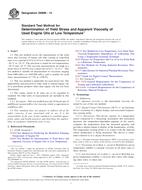
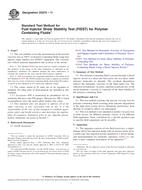 ASTM D5275-11
ASTM D5275-11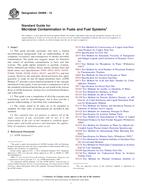 ASTM D6469-12
ASTM D6469-12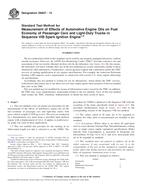 ASTM D6837-13
ASTM D6837-13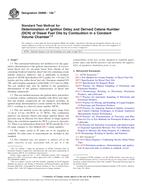 ASTM D6890-13be1..
ASTM D6890-13be1..
 Cookies
Cookies
